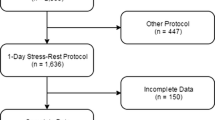Abstract.
The differentiation of residual viability from necrotic myocardium in patients with a prior myocardial infarction is important when deciding whether revascularization is indicated. Myocardial viability can be assessed by studying perfusion and regional wall motion. Gated single-photon emission tomography (SPET) imaging allows the simultaneous assessment of perfusion and function through a single study. The aim of this study was to analyse the concordance between wall motion score derived by gated SPET and by contrast ventriculography. Furthermore, the agreement between myocardial perfusion and regional myocardial wall motion was analysed for both techniques. We studied a homogeneous group of 26 consecutive patients with a prior myocardial infarction, using both gated technetium-99m tetrofosmin SPET and contrast ventriculography. A seven-segment model of the left ventricle was employed to score regional myocardial wall motion on images obtained with gated SPET and contrast ventriculography using a four-point scale. Contrast ventriculography was performed within 2 weeks of the gated SPET study. Prevalence of abnormal wall motion (akinetic or dyskinetic) was 24/182 (13%) for gated SPET and 25/182 (14%) for contrast ventriculography (P=NS). There was a high agreement (80%) in wall motion score between gated SPET and contrast ventriculography (κ =0.67, P<0.001). The agreement was better in segments with normal or mild to moderate hypoperfusion (82%, κ=0.69) than in those with severe hypoperfusion (67%, κ=0.56). The agreement between myocardial perfusion and myocardial wall motion was 89% (162/182), κ=0.57, for gated SPET and 80% (145/182), κ=0.21, for contrast ventriculography. The relation between the summed wall motion scores per patient on gated SPET and contrast ventriculography was excellent (y=0.81x+2.9, r=0.82, P<0.01). Thirteen (43%) out of 30 segments with severely diminished or no myocardial perfusion showed normal or hypokinetic wall motion on gated SPET, suggesting residual myocardial viability in malperfused regions. Our results suggest that gated SPET imaging is a reliable tool for the assessment of regional wall motion in post-myocardial infarction patients. Furthermore, in patients with a previous myocardial infarction, gated SPET imaging has the potential to detect preserved wall motion in regions with fixed perfusion defects, which might be indicative of residual myocardial viability.
Similar content being viewed by others
Author information
Authors and Affiliations
Additional information
Received 19 November 2000 and in revised form 2 January 2001
Electronic Publication
Rights and permissions
About this article
Cite this article
Wahba, F., Dibbets-Schneider, P., Bax, J. et al. Detection of residual wall motion after myocardial infarction by gated technetium-99m tetrofosmin SPET: a comparison with contrast ventriculography. Eur J Nucl Med 28, 514–521 (2001). https://doi.org/10.1007/s002590100481
Published:
Issue Date:
DOI: https://doi.org/10.1007/s002590100481




